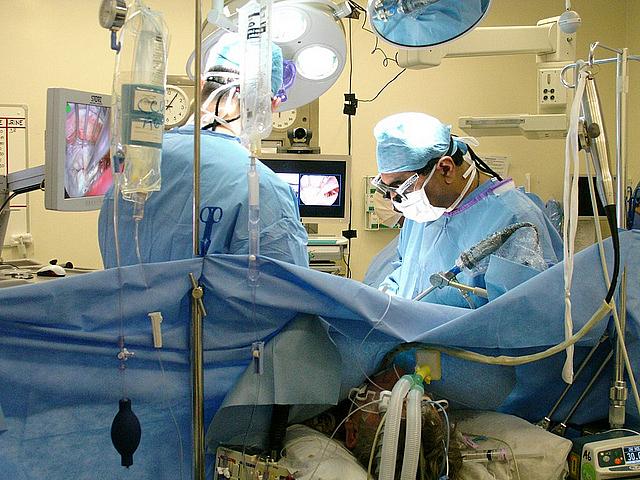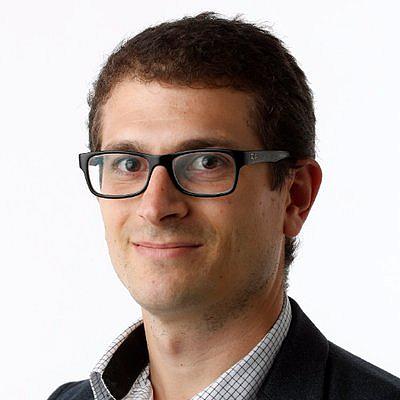Q&A: How two aces investigated a high-profile transplant center — and had immediate impact

In their blockbuster series “Heart Failure,” Houston Chronicle investigative reporter Mike Hixenbaugh and ProPublica senior editor Charles Ornstein exposed the unusually high rate of deaths and complications at one of the country’s best known heart transplant programs.
The reporting didn’t end there. Hixenbaugh and Ornstein also learned that patients at Baylor St. Luke's Medical Center had waited significantly longer than other patients for new hearts, causing some to grow sicker or die. And they discovered a series of previously undisclosed blemishes on the record of legendary heart surgeon Dr. Bud Frazier, including accusations of research violations and other ethical transgressions.
The stories had an immediate impact. Within two weeks, the hospital had temporarily suspended its heart transplant program to get a better understanding of what had gone wrong and how to fix it. Then, the federal government said it would terminate the program’s Medicare funding, a rare punishment that could have lasting consequences.
I caught up with Hixenbaugh recently at this year’s Investigative Reporters and Editors Conference in Orlando, and asked how he and Ornstein used data to tell the story, and how they had gotten so many people to talk. The interview has been edited for length and clarity.
Q: Data is key when investigating a hospital. What data sources did you use and how did you get them?
A: For heart transplants, there is a lot of easily accessible, publicly available data through the Scientific Registry of Transplant Recipients. So that was where we started. There are reports on one-year survival outcomes and transplant volumes, how many patients are getting a transplant each year compared to other hospitals. You can also request more in-depth data sets.
We spent a lot of time looking at those (reports and datasets) dating back a decade. You could easily plot a trend. More patients were dying within a year with each subsequent report. Patients were waiting longer for hearts.
Mike Hixenbaugh
The third area was Medicare data. ProPublica has Medicare data sets they use to drill down to the individual surgeon. We were able to look at how many transplants, under Medicare, one surgeon had performed before coming to St. Luke’s to lead its big program. It was not many. We could also look at the survival rate for patients who had mechanical hearts implanted by another surgeon, Bud Frasier, who had worked for 50 years developing the devices. It was one of the worst (survival rates) in the country.
Q: How did you find families to interview?
A: We had success searching obituaries. You go to www.legacy.com and do the advanced search. A lot of time, families will thank their doctors, so we searched for the doctor’s name. We searched for the hospital. We searched for the research institute, the Texas Heart Institute. We searched for the word “transplant.” We actually found 30 people we wanted to call. That led to one patient who had had a transplant in 2015.
The other key area — and this was really important — was Facebook graph search. People, when they are sick and when their family members are sick, create support groups. They post publicly, so all their friends can see. We found probably 15 people who had received a heart transplant or were waiting for one.
Q: Can you explain what a graph search is?
A: It’s an advanced search function where you can go in and be very specific. You have to play with different combinations (of search terms). I would start with “St. Luke’s” and search specifically in Houston for a date range, and just scroll and scroll.
Q: When you found people, did you reach out online or in person?
A: We did a little of both. If it was possible to go out and knock on the door, we had a far higher success rate. The first two patients we called hung up on us. I visited the next patient in person and it was an instant connection. She sat down with me for an hour or two. In fact, I went and knocked on the door of one of the initial patients who hung up on a me a couple of weeks later. I just said, “You hung up on me before. I won’t take up your time. I wrote this note explaining what we are doing in case you want to talk now.” She closed the door on me. But a few months after I gave her that note, her husband went back into the hospital with severe breathing problems related to transplant complications. She called me then and said, “My husband wants to talk to you.” She would never have called me if I hadn’t shown up.
Q: How did you get medical professionals to talk on the record?
A: It was difficult initially, but what I found is, when I begin a conversation with a physician or a medical professional like a nurse or a perfusionist, I tell them what my motivation is. I want to make them understand what we’re doing and why are doing it. Something like, “Look, we’ve heard that patients have been harmed and the families haven’t been told fully what’s going on, and you may have information, that if made public, will help maybe help save lives. That why I’m doing the story I’m doing. I think patients deserve to know.”
My default when I call a doctor is (to be) on the record. I don’t start out with negotiating on the record, off the record. At the end of the conversation, maybe we’ll talk about it.
Early on, I had a cardiologist I talked to. We talked for an hour. She was quoted on the record, and there was this snowball effect. This was a cardiologist who was a former medical director of the program, well respected. We were able to go to other sources who were hesitant and say, “This doctor is on the record and this is why she’s doing it: She wants to help these patients. We need more people (to go on the record).” It just kind of snowballed. The second doctor said, “Ok, well, I guess if you got her, I can go on the record.” The second became the third and the fourth. Then even the targets of the investigation became more talkative because they realized all their former colleagues were talking.
Q: What advice do you have for reporters investigating similar stories?
A: I worked exclusively on this story for five months. Charlie spent a good amount of that time mostly working on this. It takes time. You have to be patient with people. They've experienced trauma in a lot of cases. In many cases, when we spoke to patients, we knew more about what had gone wrong with their loved one’s care than they did. It’s jarring for them to learn this. So just be patient and appropriately persistent. Drop a note in the mail. Send a link to the previous story in your series.
With physicians and medical staff, be up front with them and make clear what’s motivating you. I think a lot of them share our motives in a way. If they are stand up and ethical, they care about the patients. If they raised concerns internally and nothing was done about it, they could see you as an opportunity to (get the information out). But make it clear that they have to put some skin in the game.
[Photo by Andy G via Flickr.]

